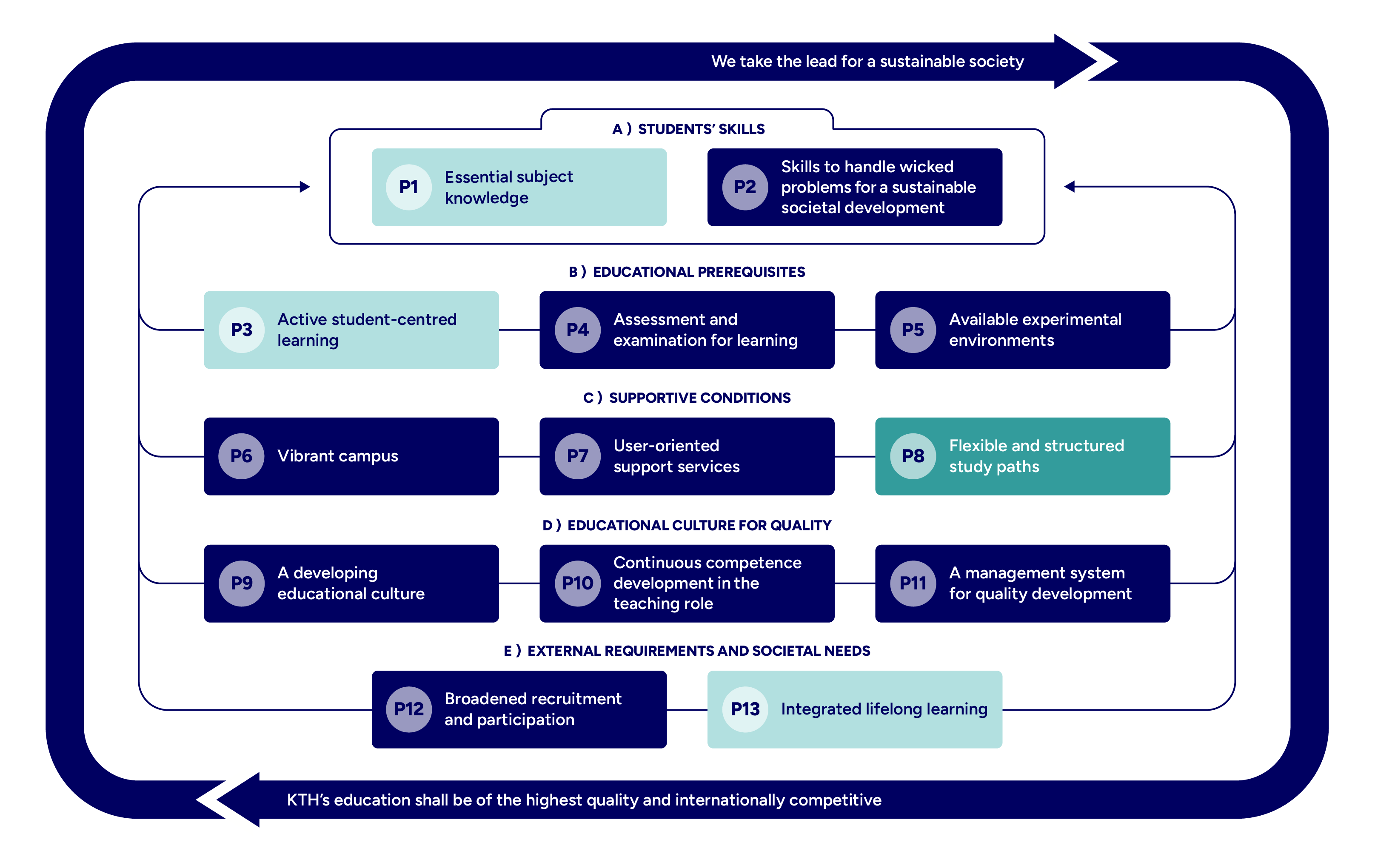Safe study paths with clear specific entry requirements
The project involves creating methods and user-friendly digital tools for managing specific entry requirements (SB) and planning study paths, thereby increasing safety for student and teacher as well as efficiency in SB-management.

Project context
The purpose of the “specific entry requirements” (särskild behörighet, SB) part of a course syllabus is to ensure that only students who have the knowledge needed to pass the course are admitted. The practice of using SB for course admission was introduced at KTH a couple of years ago, following a request by the Swedish Higher Education Authority (UKÄ) to abandon the previous system of grade promotion. Application of SB still varies at KTH. This is confusing for students and does not ensure safe study paths for everyone. This can be improved by working systematically with clarifying the SB and making more efficient use of digitalisation. Efficiency is key: EECS receives more than 10'000 applications to its courses each semester. There are typically more than 200 courses that build on prior academic knowledge and thus require screening of the applicants.
Purpose (outcome)
This project aims to ensure safe study paths*, by further developing, consolidating and documenting the methods that have emerged at EECS in recent years to handle SB, so that:
- a larger number of courses undergo automated SB review and processing times are reduced
- fewer difficult-to-assess cases (and thus less frustration) arise
For quality-assured (e.g. systematically clarified) SBs, dependencies can be illustrated in a graph that shows how the courses are connected in terms of subject matter. Such a graph aims to:
- show subject-specific progression chains
- quality-assert the structured study paths within programmes, and find flexible study paths
- ensure that students and teachers can be confident that the prerequisite knowledge is sufficient and available
- see which courses are close to each other in terms of subject matter and build teaching teams.
*A safe study path is when the student progresses seamlessly through learning activities and examinations, without the student nor the teacher having to worry about insufficient prior knowledge.
Project results (output)
- Documentation for students, teachers, programme managers, directors of studies and administration on how to analyse, clarify and quality-assure SB requirements including process descriptions and solutions for assessing the concept of active participation
- Solution proposals for difficult typical cases, e.g., SB for courses close to each other, for lifelong learning (LL), for Master's programmes and solutions for SB formulations for EECS courses that we currently experience problems with.
- User-friendly tools for planning study paths (e.g. graphs with courses as nodes and SB requirements as edges). These tools should be easy to use so that the study advisors and students can use them themselves.
- Information dissemination and cooperation with individual groups outside EECS.
Time plan
Start date: 2024-05-15
End date: 2026-06-30
Project documentation
If you have a KTH ID, you can read the latest project documents when logged in.
- Poster: Poster_FrU25_2413-EECS_Trygga_Studievägar_SB_250520.pdf
- Project initiation document: Projektdirektiv_FrU25_2413-EECS_StudievägarSärskildBehörighet_250510.pdf (Swedish)
